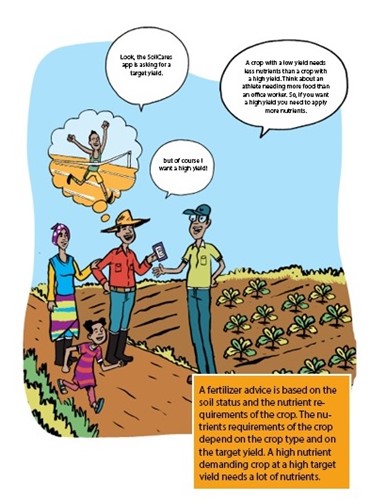Expert blog series: Crops are like humans (Blog 5)
Dr. Christy van Beek, director of SoilCares Foundation, shares her expertise on soil fertility and fertiliser recommendations in a series of blogs. In this fifth and last blog of the series she explains the analogy between crop and human nutrition.
[Blog 5] Crops are like humans:
what you eat is what you get
In this blog I come back to the analogy between crop nutrition and human nutrition: a healthy diet is diverse and contains different essential elements. If we feed the soil correctly, the crop can take up just that diversity of nutrients that makes a healthy crop. There is also an analogy between the available nutrient determinations of wet chemistry laboratories and the total amounts determined by sensor based methods. The Dutch Nutrition Institute recommends people to consume 75 mg Vitamin C per day. It could also recommend people to eat 1.5 oranges per day, or 125 g strawberries. The recommendations are the same (i.e. is the total intake), only the numbers are different.

Figure 3. SoilCares Foundation publishes booklets to explain the concepts of soil fertility management to smallholder farmers. In this example, the issue of target yields is explained. Again, the analogy with human performance is made.
We have the means to improve soil fertility. PLEASE act!
In this series of blogs I tried to share my view on soil fertility management. It is the sole primary production factor millions of smallholder farmers dwell upon and it is deteriorating at an unprecedented speed. Already, more than 12 million of hectares of potentially productive land is taken out of production every year because of improper land management. The International Food and Policy Research Institute (IFPRI) estimated the costs caused by injudicious soil management at US$ 231 billion per year. Millions of smallholder farmers are struggling to survive each day and the productive capacity of their land is one of the main factors determining their survival. We have the means to improve soil fertility. However, the soil scientific community is not unified and debates about the best approaches continue. Don’t get me wrong, I am very much in favor of scientific discussions, and they should be held often and well thought out. But in the meantime, please, PLEASE act! Even if the soil recommendations are not perfect, the impact can be considerable. There is no need for waiting, the farmers are waiting for us. Let’s go and help them!
Did you find this blog interesting?
Then check also the other blogs from the series:

